Australia spills – our leading tips
February 23rd, 2012
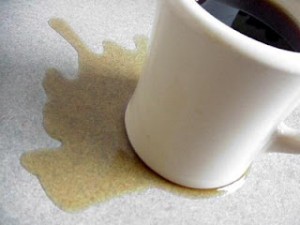 A lot of people have been talking about spills lately. While managing the political kind takes a lot of time and effort, managing common household spills in the kitchen can actually be surprisingly easy.
A lot of people have been talking about spills lately. While managing the political kind takes a lot of time and effort, managing common household spills in the kitchen can actually be surprisingly easy.
Here are thirteen tips for managing spills:
1. Make sure that your kitchen workspace is clear and uncluttered, providing fewer distractions and making any spills that do happen easier to get to and clean.
2. Prepare in advance. If you’re doing some messy cooking where spills are inevitable, think about laying down some newspaper over workspace surfaces first.
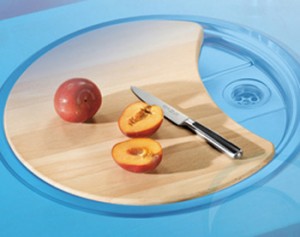 3. Preparing food on a tray attachment fitted to your sink means any spill will go right down the drain, keeping everything neat.
3. Preparing food on a tray attachment fitted to your sink means any spill will go right down the drain, keeping everything neat.
4. Try to deal with spills straight away – they’ll be tougher to manage later.
5. Do your measuring up close and personal. Most spills take place when ingredients are in transit, so bring everything together into the one area first before doling out the required amounts.
6. Use paper towels to clean up spills, rather than tea towels, which will absorb the flavours, odours and germs, spreading them with further use.
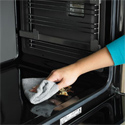 7. Use salt to clean spills in the oven. If food bubbles over and spills on your oven’s floor while cooking, try to cover the spill in salt straight away – the salt will help reduce the smoke from the spill if it burns and make it easier to clean up once the oven is cool. Even baked-on spills can be cleaned more easily by soaking them in warm salt water first.
7. Use salt to clean spills in the oven. If food bubbles over and spills on your oven’s floor while cooking, try to cover the spill in salt straight away – the salt will help reduce the smoke from the spill if it burns and make it easier to clean up once the oven is cool. Even baked-on spills can be cleaned more easily by soaking them in warm salt water first.
8. Using a pyrolytic oven can be used to vaporise spills and food splashes and make cleaning easier.
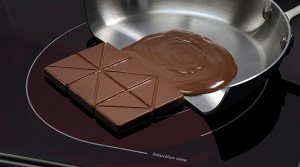 9. Spills on induction cooktops are far less likely to burn or get caked onto the flat, heatless surface, making cleaning them as simple as giving the surface a wipe down – just be careful of any residual heat from your pots and pans.
9. Spills on induction cooktops are far less likely to burn or get caked onto the flat, heatless surface, making cleaning them as simple as giving the surface a wipe down – just be careful of any residual heat from your pots and pans.
10. If you have a wooden kitchen floor, be mindful of water spills – if they’re left to soak into the floorboards, you could wind up with a swelling or rot problem later on.
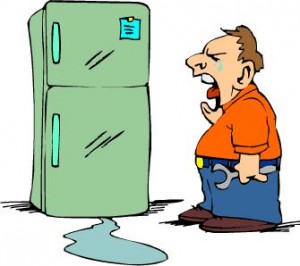 11. It’s important to stay vigilant for any spills in your fridge and to clean them up as soon as possible – if left alone, they’ll spread odours through the fridge, or freeze in place and prove difficult to shift later.
11. It’s important to stay vigilant for any spills in your fridge and to clean them up as soon as possible – if left alone, they’ll spread odours through the fridge, or freeze in place and prove difficult to shift later.
12. Look for a fridge with spill-safe shelves, so that any spills on an upper shelf won’t trickle down to the lower shelves.
13. Put things away as you go. Less clutter means fewer things to knock over, creating more spills.

I seriously disagree with “6. Use paper towels to clean up spills, rather than tea towels, which will absorb the flavours, odours and germs, spreading them with further use.” Having a collection of tea towels so they don’t need to be reused without washing is surely more sensible than destroying the environment.
Thanks Chrissy, you make an excellent point. Using one tea towel for
spills and another for drying dishes and more is a great idea, and
certainly environmentally-conscious.
It’s also a good idea to make sure that the tea towel used for spills
gets some prompt attention in the laundry – I’ve had some bad
experiences with tea towels getting pretty gross after leaving them
unwashed for too long.